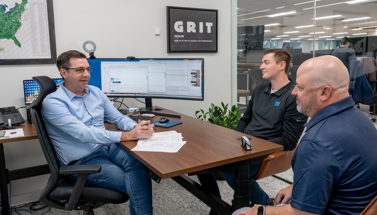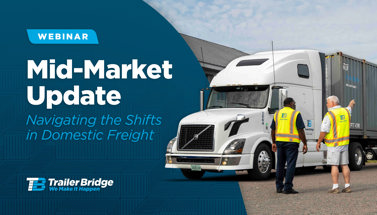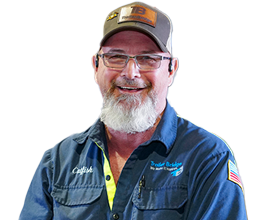The North American transportation logistics market is massive—in fact, it was valued at over $1 trillion in 2019. According to the US Department of Transportation, over $95 billion in transborder freight moves between Canada, the United States, and Mexico by truck, rail, sea, or air each month.
How do we make it happen? In this new infographic, the transportation logistics experts here at Trailer Bridge share interesting facts, information, and tips to help you choose the right logistics partner and successfully move your freight from Point A to B. Check it out, and don’t miss the highlights below the graphic.
Want to share this resource with your colleagues?
Download the interactive PDF here
How does freight move across North America?
It takes a variety of different vessels and vehicles to deliver goods across our vast network of roads, waterways, islands, and cities, including:
- Liquid or refrigerated trucks
- Ground expedited trucks for express delivery
- Last-Mile delivery; shipped to a destination, direct-to-customer
- LTL: Less-than-truckload shipments
- FTL: Full truckload shipments
- Rail or Intermodal (using two modes of transport)
- Ocean shipping
- Cargo planes
In North America, our transportation logistics industry is more reliant on trucks than any other vehicle or vessel. Trucks hauled as much as 10.8 billion tons around the USA in 2017, equating to about 30 lbs. of goods for every American man, woman, and child. All of those truck shipments are essential for our economy, generating $700 billion in revenues and accounting for 6% of all full-time jobs in the United States.
Ocean shipping is the third-largest mode of transport, shipping $76 billion worth of goods each year. Some of these goods head to Puerto Rico, where 90% of all containers come from mainland U.S. When moving freight by ocean carrier, container size matters—shipping in 53’ ocean containers gives you 37% more space and delivers:
- a lower per-unit shipment cost for customers,
- shorter delivery times,
- and a reduced overall supply chain footprint.
Intermodal transport shipping, which uses more than one vessel or vehicle, is an essential aspect of moving goods and often includes railways. Together with trucks and maritime shippers, freight railroads carry nearly 57 tons of freight per American each year.






